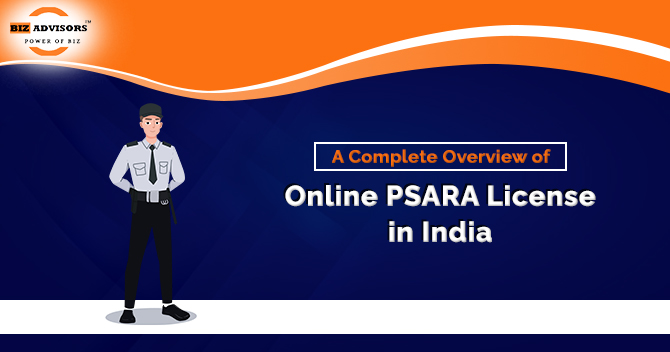Environmental Clearance comprehensively determines the standards for regulating the amendments and processing the theoretical aspects of the project management concerning environmental welfare to analyze the ideal structural framework of environmental justice with a broader perspective and conspicuous vision. Environmental Clearance prepares a regulatory framework for giving legal validity to the project management for the systemization of environmental sustainability. The Ministry of Environment and Forest plays a crucial role in granting Environmental Clearance to any establishment to reinforce ecological productivity on a wide platform. Therefore, Environmental Clearance must be obtained by every corporation that seeks to authenticate its project report concerning the development of biological diversity at a wide scale. In this blog post, you will learn about the concerning of Environmental Clearance in a detailed format.
Environmental Clearance
All projects (including those in the construction and industrial sectors) mentioned in the Environment Impact Assessment (EIA) 2006 Notification are needed to get the necessary Environment Clearance (EC). EIA is the process of determining the potential environmental effects of a project or development activity, taking into account both positive and negative effects on the environment as well as connected socioeconomic, cultural, and health-related aspects. From the outset of project planning and design, EIA seeks to foresee these environmental effects. By offering strategies to lessen negative effects, molding the project to fit the local environment, and providing projections and options to decision-makers, it benefits the local community and the project’s proponent.
The environmental clearance procedure, which includes factors like screening, scoping, and evaluation of the impending project, is necessary for 39 different types of projects. The major goal is to evaluate how the proposed project will affect the environment and the populace and to work to lessen or eliminate that impact.
Projects and industries that are allegedly detrimental to the environment and other living things are targeted through environmental clearance. It acts as legal approval for sectors of the economy that is harmful to the environment. According to the 1986 Environment Protection Act, it is now required.
A list of industries that fit into particular categories was released by the notification of the EIA published in 2006.
The acts listed below, control the issuing of the Clearance:
• 1986’s Environment (Protein) Act
• The 2002 Biological Diversity Act
• Enacted in 1995, the National Environmental Tribunal Act
• The National Green Tribunal Act of 2010
• A 1997 law known as the National Environmental Appellate Authority Act
Essential Conditions
Based on the kind of category, there are certain conditions for both current and new projects for issuing a prior Clearance that must be met under the regulatory authority employees concerned –
If the project falls under “Category – A” of the Schedule, the Ministry of Environment and Forest, the Central Government, is the regulating authorized persons.
If the project falls under “Category – B” of the Schedule, the State Environment Impact Assessment Authority, generally known as SEIAA, is the regulating authorized person.
The following requirements must be mandatorily disclosed to the authorized people before the start of any construction work or other Project Management activity, excluding the securing of the land:
According to the 2006 EIA notification, all operations must be listed in the Schedule.
The notice of the development and expansion of the current projects included in the Schedule by the accumulating of capacity over the limits that are stipulated.
Any modifications made to the product type from an already-existing unit that produces products and is incorporated into the schedule that goes beyond the specified range.
Various types of Environmental Clearance
Environmental clearances fall into the following categories, which are listed below:
Subclass A:
Prior Approval is required for Category A-type projects before any construction or operation may begin. The screening process is not necessary for projects that come under Category A. The Ministry of Environment, Forest, and Climate Change[1] is required to grant clearance for Category A Projects.
Subclass B:
Projects of category B must, by law, go through the screening process. The State Government must also provide clearance for Category B Projects. The Category B Projects are divided into two more sub-categories:
B1 and B2 categories:
The Environmental Impact Assessment Report for Category B2, often known as the EIA Report, is the only significant distinction between the aforementioned subcategories. However, the Appraisal Committee is empowered to request an EIA Study if it is thought to be necessary.
Special Cases concerning Environmental Clearance
The requirement that only industrial or construction-based Undertakings may receive Environmental Clearance does not apply in India. It is necessary to issue the Clearance before any project or activity can start in any of the following geographical areas since they are thought to be ecologically vulnerable areas, regardless of the project type:
• Monuments to archaeology
• Scenic locales
• Places of Worship and History
• Seaside Inns
• Cliff Resorts
• Areas of the coast where mangroves are abundant
• Species-Specific Breeding Sites
• Gulf Coasts
• Estuaries
• The Biosphere Reserves
• National Swamps and Lakes
• Sanctuaries and National Parks
• Seismic zones
• Areas of Geological and Scientific Interest
• Military Installations in tribal settlements
• Airport Premises for Border Regions
Conclusion
The aforementioned text imparts an unambiguous picturesque concerning Environmental Clearance. Environmental Clearance adjoins the structural framework of ecological productivity with the ideal pattern of law. Environmental Clearance determines the protocols and standardization of the regulatory framework in the context of a smooth and efficient promotion of biological diversity. Our legal luminaries at BizAdvisors.io provide a robust support system in the context of assisting individuals in easily obtaining Environmental Clearance. You can freely contact our legal consultants at BizAdvisors.io for any kind of professional assistance or help in the context of the structural framework of Environmental Clearance.
Read our article:Everything You Need to Know About Environmental Impact Assessment
 9559179325
9559179325 9559179325
9559179325





